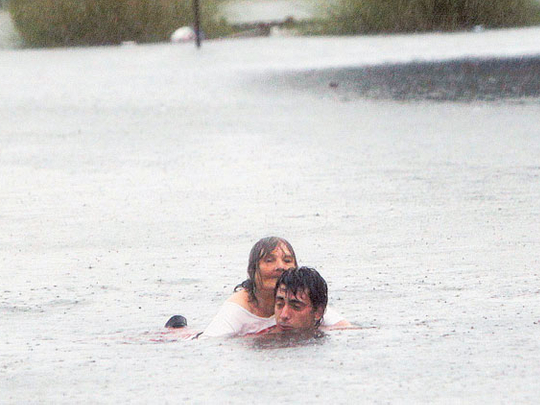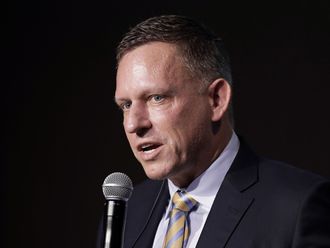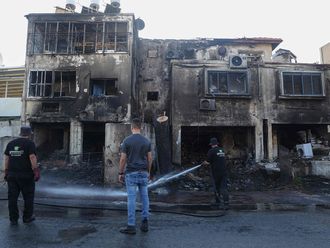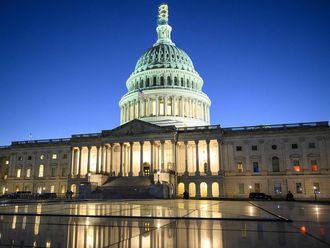
St. George Island, Florida: Debby, the guest that wouldn’t leave, is ruining things for a lot of other visitors despite weakening to a tropical depression and leaving Florida’s Gulf Coast behind.
The National Hurricane Center said late Tuesday that Debby was 110 miles (177 kilometres) west of Daytona Beach and moving southeastward at 7 mph (11 km/h). It had maximum sustained winds of 35 mph (56 km/h) as it slogged across northern Florida toward the Atlantic coast.
Forecasters said they expected Debby to turn toward the east overnight, and then veer east-northeast while picking up speed. The storm’s centre is expected to cross the northern Florida peninsula overnight and head out to sea as early as Wednesday afternoon.
But the centre warned that the storm continues to pose dangers even if it no longer packs the same punch.
Isolated tornadoes are possible across the Florida peninsula on Wednesday, and coastal areas may see flooding because of the combination of a storm surge and the tide.
For their part, vacationers were wearing ponchos instead of swimsuits at the peak of the summer season because of the tropical storm, which has drenched Florida for at least four days straight like a giant shower head set up over the state’s Gulf Coast. Debby has dumped as much as 26 inches of rain in some spots.
Disney World wasn’t as crowded as usual, and one of its water parks closed because of the soggy, windy weather.
Along the Florida Panhandle, where Debby sat offshore nearly motionless for days, the parking lot at the 100-room Buccaneer Inn was empty because of a power outage ahead of the usually big pre-July Fourth weekend.
“We’ve had bad luck on this island,” said the inn’s vice president, JoAnn Shiver. “We’ve had Dennis. We’ve had Katrina. We had the oil spill.”
In a state where the biggest attractions are the sand and the sun, Debby forced many to make other plans.
Douglas and Carolyn Green of Nashville, Tenn., were supposed to spend a week on St. George Island with three generations of family, but arrived to find the electricity was out and the bridge closed to non-residents for fear of looters. They spent Monday night in nearby Apalachicola, and then all nine relatives headed to Fort Walton Beach.
“We never saw the island,” said Douglas Green. “We’re moving on. Plan B, I guess you’d call it.”
Debby finally blew ashore Tuesday afternoon near Steinhatchee in the Big Bend area, the crook of Florida’s elbow. At that point, it had sustained winds near 40 mph, barely a tropical storm hours before it was downgraded.
Several areas in northern Florida have received more than 10 inches of rain, and forecasters said southeastern Georgia could expect the same. Wakulla, an area in northwestern Florida known for camping and canoeing, had gotten more than 26 inches as of Tuesday.
A woman was killed in a tornado spun off from the storm on Sunday, and a man disappeared in the rough surf over the weekend in Alabama. The storm knocked out power to 250,000 homes and business starting last weekend, but electricity had been restored to all but about 15,000 Progress Energy customers by mid-Tuesday. Debby has caused mostly scattered flooding and opened up sinkholes, but forecasters warned it could get worse.
“Even though the winds are coming down, the rain threat continues,” said James Franklin at the hurricane centre. “We expect another 4 to 8 inches, in some of these areas up in north Florida, in particular.”












